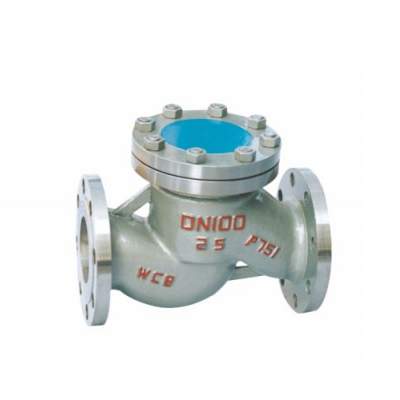Introduction

Two-way check valves are indispensable components in numerous fluid systems, playing a crucial role in ensuring unidirectional flow. These mechanical devices are designed to automatically open and close, allowing fluid to flow in one direction while preventing backflow. By understanding the various benefits and applications of two-way check valves, engineers and technicians can optimize the performance and reliability of their systems.
Understanding Two-Way Check Valve Operation
A two-way check valve is a passive flow control device that operates based on a simple yet effective principle. It consists of a valve body, a movable disc or ball, and a spring. When the fluid pressure on the inlet side exceeds the pressure on the outlet side, the disc or ball is lifted, allowing the fluid to pass through. Conversely, when the pressure differential reverses, the spring forces the disc or ball to close, preventing backflow.
Key Benefits of Two-Way Check Valves
Preventing Backflow Contamination
One of the primary advantages of two-way check valves is their ability to safeguard fluid quality by preventing backflow contamination. In systems where the integrity of the fluid is paramount, such as in water supply systems, chemical processing plants, and pharmaceutical manufacturing facilities, backflow can introduce contaminants, leading to significant operational disruptions, product degradation, and potential health risks. By ensuring unidirectional flow, two-way check valves mitigate these risks, protecting both the system and its end-users.
Protecting Equipment and Infrastructure
Two-way check valves also play a vital role in protecting equipment and infrastructure from damage caused by water hammer and excessive pressure surges. When fluid flow is suddenly stopped or reversed, it can create shock waves that can damage pipes, pumps, and other components. By preventing backflow, two-way check valves absorb these pressure surges, minimizing the risk of costly repairs and downtime.
Improving System Efficiency
In many fluid systems, two-way check valves can enhance efficiency by preventing fluid from draining back into the system when it is not in operation. This helps maintain system pressure, reduces energy consumption, and minimizes the time required to restart the system.
Enhancing Safety
Safety is a critical concern in numerous industries. Two-way check valves can significantly enhance safety by preventing the release of hazardous materials in the event of a system failure. For example, in fire sprinkler systems, two-way check valves prevent water from draining from the pipes, ensuring that it is readily available to suppress fires.
Applications of Two-Way Check Valves
Two-way check valves find widespread application across various industries, including:
- Water Supply Systems: Protecting drinking water quality by preventing backflow contamination from wastewater or other sources.
- HVAC Systems: Controlling airflow and preventing backdraft, ensuring efficient and safe operation of heating, ventilation, and air conditioning systems.
- Chemical Processing Plants: Preventing the mixing of incompatible chemicals, minimizing the risk of hazardous reactions and environmental contamination.
- Oil and Gas Industry: Regulating fluid flow in pipelines, ensuring efficient transportation and preventing leaks.
- Automotive Industry: Controlling fluid flow in hydraulic systems, such as brake systems and power steering systems, ensuring optimal performance and reliability.
Factors to Consider When Selecting a Two-Way Check Valve
Several factors should be considered when selecting a two-way check valve for a specific application:
- Fluid Type: The type of fluid being handled will influence the choice of materials for the valve body and internal components.
- Pressure Rating: The valve must be capable of withstanding the maximum operating pressure of the system.
- Temperature Rating: The valve must be suitable for the temperature range of the fluid.
- Flow Rate: The valve must be sized to accommodate the required flow rate without compromising performance.
- End Connections: The valve must have appropriate end connections to match the piping system.
- Material Compatibility: The valve materials must be compatible with the fluid to prevent corrosion and other adverse effects.
Comparison of Different Types of Two-Way Check Valves

| Type of Valve | Advantages | Disadvantages | Applications |
|---|---|---|---|
| Ball Check Valve | Simple design, compact, low cost, reliable | May experience cavitation at high velocities | General-purpose applications |
| Lift Check Valve | High flow capacity, tight shut-off | More complex design, potential for noise and vibration | Large-diameter piping systems, high-pressure applications |
| Swing Check Valve | Simple design, low cost, reliable | May experience slower closing time, potential for water hammer | General-purpose applications |
Conclusion
Two-way check valves are essential components that play a critical role in ensuring the safe, efficient, and reliable operation of numerous fluid systems. By understanding the benefits and applications of these devices, engineers and technicians can make informed decisions to optimize system performance and minimize risks.
FAQ
What is the difference between a check valve and a non-return valve?
A check valve and a non-return valve are essentially the same thing. Both are devices that prevent fluid from flowing backward in a piping system. The terms are often used interchangeably.
How do I choose the right size check valve for my application?
The correct size of a check valve is crucial for optimal performance. It should be sized to handle the maximum flow rate of the fluid without causing excessive pressure drop or restricting flow. Consult with a fluid dynamics expert or refer to manufacturer’s guidelines for accurate sizing.
Can a check valve be installed horizontally?
While check valves can be installed in various orientations, including horizontally, it’s important to consider the specific design of the valve. Some valve types, like swing check valves, may perform better in vertical installations to ensure proper seating of the disc. Consult the manufacturer’s recommendations for optimal installation.
How often should a check valve be inspected and maintained?
The frequency of inspection and maintenance for a check valve depends on factors such as the fluid type, operating conditions, and local regulations. However, regular visual inspections can help identify signs of wear, corrosion, or damage. More thorough inspections and maintenance, including cleaning and lubrication, may be required periodically.
